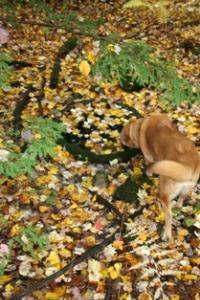Fact Sheet – Frequently Asked Questions
1. What are land trusts?
Land trusts are private, non-profit corporations dedicated to the purpose of helping landowners voluntarily conserve their undeveloped land.
2. How does a land trust protect land from development?
Acquisition of fee ownership: A land trust can acquire conservation land, either by purchase or by gift. A land trust is limited by its corporate powers to using the land solely for conservation purposes.
Acquisition of conservation easements: A land trust can either buy or be given a conservation easement. The easement defines what rights the landowner retains, and what rights and responsibilities the land trust acquires. Each easement is unique.
All properties are evaluated by the 3RLT Board for selection criteria before being accepted for an easement with the land trust.
3. What is a Conservation Easement?
A conservation easement is a legal agreement between a landowner and a land trust that permanently limits uses of the land in order to protect its significant natural features. The easement allows the owner to continue to own and use the land, and to sell it or pass it on to heirs.
One of 3RLT’s roles is to help the landowners understand how to
preserve their land for the future. The tool used to achieve this goal
is a conservation easement. Conservation Easements are a legal means by
which landowners voluntarily set permanent limitations on the future use
of their property. The
Trust helps the landowner develop the language for the easement
according to their wishes and to guide them through the process of
inventory and consensus. This process is usually gradual and may take
several years.
The landowner retains ownership and can still sell, but the owner
and all future owners may only use the land within the restrictions set
by the conservation easement.
The versatility of conservation easements allows for a wide range
uses. Landowners design their own requirements from a “forever wild”
easement to an easement that permits limited residential development,
farming, managed commercial timber harvesting, etc.
The stipulations associated with the easement are legally binding
and are monitored by the Trust forever. The Trust has established an
endowment fund and raises money through memberships, a raffle, grants,
and landowner contributions. Landowner contributions are negotiated on a
case by case basis.
Donations of land may be accepted by the Trust, which will manage
the property in a manner consistent with the wishes of the donor and
with the Trust’s philosophy of resource protection. Donations may be
outright, or may be inserted in wills or other legal documents.
4. How does a Conservation Easement work to prevent development?
The land trust is obligated to enforce the specific terms of each easement. The land trust carries out its stewardship responsibilities by regularly scheduled monitoring of the property. Meetings with the landowner(s)are designed to talk about any work done on the property or plans for the future as well as work through problems of complying with the easement, and by legal action, if necessary, to correct violations of the easement. Contributions to the Stewardship fund are negotiated case by case.
5. Why is there a need to have local land trusts?
Local land trusts, unlike municipalities, have only one purpose: to hold land and easements in perpetuity for conservation purposes. Municipal governments are not in the business of land conservation. State agencies and statewide land trusts cannot meet the need for land conservation in every community in the state.
6. What are the benefits and costs of land conservation to municipalities?
Benefits: Land trusts preserve land and water resources for public access, public recreation, forest production, agriculture, and wildlife habitat. Open space requires less services than development.
Costs: Conservation lands may generate lower tax revenues for the municipality.
7. What are the benefits and costs of an easement to the landowner?
Benefits: The owner’s undeveloped land will be preserved in perpetuity; and property, income, and estate taxes may be lowered.
Costs: The owner will give up at least some development rights forever, and will be asked to contribute to a fund set aside to pay for land trust stewardship costs.
8. Can Forests be logged when under easements?
YES! 3RLT easements, in most cases, are written to encourage best management practices to insure sustainable working forests.
IF YOU HAVE MORE QUESTIONS, WISH TO JOIN, OR WOULD LIKE TO BE ON THE MAILING LIST, PLEASE CONTACT US AT: info@3rlt.org

